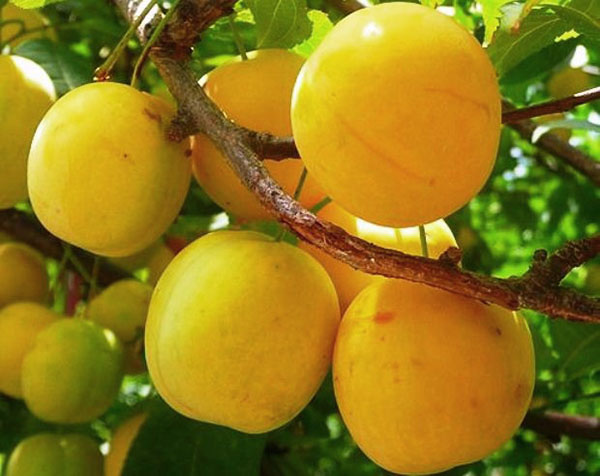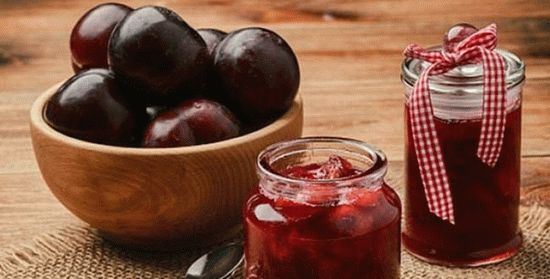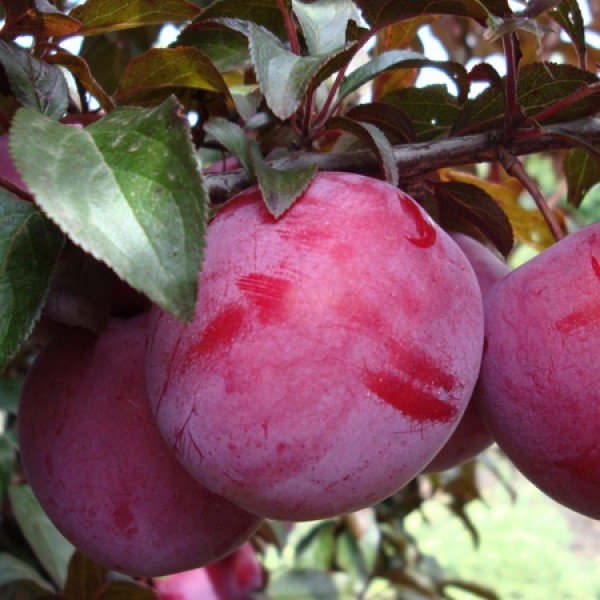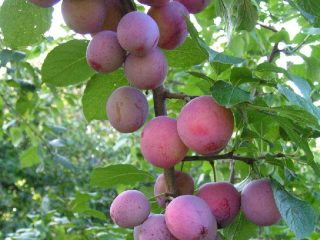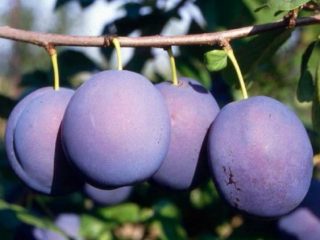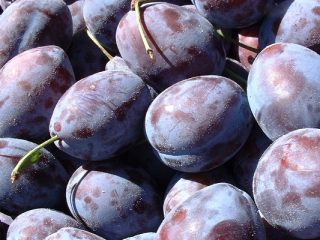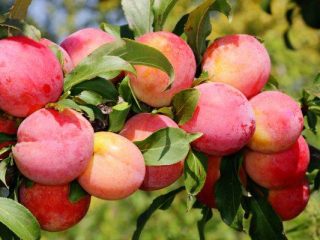Content
Peach plum is famous for its delicious fruits and abundant harvest. The variety is widespread in the southern regions. In the northern regions, its subspecies is grown - the Michurin plum. This variety is an excellent option for a summer cottage and commercial use.
History of variety selection
The description of the Peach plum variety was first mentioned in 1830. More accurate information about this Western European culture has not been preserved. Previously, the plum variety was called Red Nectarine, Royal Rouge.
Description of Peach plum
Peach plum and its subspecies, Michurina plum, are universal varieties. They can grow in the southern, northern regions:
- Krasnodar region;
- Rostov;
- Stavropol region;
- Voronezh region;
- Kursk, others.
The height of the Peach plum tree is on average 3-4 m. Young plantings grow quickly. The shape of the crown is round, similar to an inverted cone. It is of medium thickness, but becomes more voluminous with age. The leaves are large, oval. The fruits are large. Their weight can be from 50 to 70 g. The plum is round, slightly flattened at the top. The skin of the fruit is thick. Their color smoothly shifts from yellow-green to purple. The pulp is tender and juicy. The fruits are fragrant. The bone inside comes off easily.
Description of Peach Yellow Plum
The history of Michurin's peach plum begins in the middle of the last century. There was a need to produce a variety that would be more resistant to low temperatures; it would be possible to cultivate it in the northern regions. A white Samara plum seedling was pollinated with the American variety Washington. The result was a plant with delicious dessert fruits. They named him after a biologist who was involved in a scientific experiment.
Yellow peach plum reaches 3 m. A dense crown, spreading branches, a strong trunk are the main characteristics of an adult tree. The fruits of the Michurina plum are yellow with a greenish tint. They are smaller in size. Their weight is 35-40 g. The harvest is harvested in August-September. One plum produces up to 15 kg of fruit.
A photo of the Persikova Michurin plum is presented below:
Characteristics of the variety
The main characteristics of the peach plum must be taken into account when planting and caring. A correctly chosen place for a plant, regular watering, and timely preventive measures against diseases are the key to healthy trees and a large harvest.
Drought resistance, frost resistance
The plum variety prefers a mild, warm climate.The plant tolerates dry summer periods well. Timely moistening of the soil helps the tree in the hot summer. In northern regions with lower temperatures, the Michurin plum takes root better.
Pollinators of Peach plum
The sterile peach plum variety requires pollinators. The best ones for this are:
- Hungarian;
- Greengage;
- Mirabelle Nancy, others.
The variety blooms in July. Harvesting can be done in August.
Productivity and fruiting
Peach plum is early fruiting. The first fruits are harvested 5-6 years after planting the seedlings. The variety produces a stable harvest in the fifteenth year of life. Up to 50 kg of juicy sweet harvest is collected from one tree. The Michurina plum ripens a little later: the fruits ripen by the end of August. The yellow fruits are harvested at the beginning of autumn.
Area of application of berries
Plums are an excellent option for compotes, preserves, and jams. They make delicious wine. Ripe fruits can be frozen for later use in winter.
Resistance to diseases and pests
The variety can be affected by various diseases and pests. Plum is quite resistant to their destructive influence. A set of preventive measures and proper care will increase the level of resistance to harmful lesions.
Advantages and disadvantages of the variety
The main advantages of Peach plum have made it popular among other garden crops:
- Early maturation. The variety ripens much earlier than similar trees.
- Sweet, large fruits.
- Abundant harvests.
- Good resistance to diseases and pests.
The distinctive features of the tree must be taken into account when caring for the plant:
- Additional pollinators are needed for the harvest.
- Low tolerance to frost. The exception is the Michurina variety.
- At low temperatures, fruits change their taste and yield may decrease.
Planting plums in peach spring
Planting a plum tree is not a labor-intensive process. It is enough to follow simple recommendations to obtain the most correct result.
Recommended timing
Planting of seedlings is carried out in the spring. Holes for them are prepared in the fall. Before the onset of cold weather, young plants should not be rooted. They will not have time to grow stronger, will not survive the frost, and may die.
Choosing a suitable location
Peach plum prefers a sunny place, protected from drafts. It is better to choose the south side of the garden plot. The nearest plantings and buildings should be located at a distance of 5 m or more from the tree. Plum loves space. Its root system will develop rapidly. Other plants should not interfere with it.
When planting Michurin plum in the northern regions, care must be taken to ensure that the place is the most illuminated and windless. The variety tolerates cold well, but additional measures to protect the tree will make it more resistant to changing climates.
What crops can and cannot be planted nearby?
Favorable “neighbors” for the Peach plum:
- Apple tree;
- currant;
- raspberries;
- gooseberry.
Pears, cherries and sweet cherries do not take root next to this variety. The tree may be left without a harvest.
Selection and preparation of planting material
For the process of planting Peach plum, a standard set of tools is required:
- shovel;
- device for loosening;
- fertilizer;
- water.
Landing algorithm
Creating favorable conditions for the growth of Peach plum begins with the planting process. The choice of location and soil is of great importance. The variety loves fertile, not waterlogged soil. The groundwater level should be checked. A simple sequence of actions for planting seedlings contributes to the rapid growth of the tree and a good harvest:
- The hole for the cutting must be at least 50 cm deep and 70 cm in diameter. It is prepared in the fall.
- Part of the soil from the pit is mixed with compost, coal, and other fertilizers.
- A stake 1 m long is installed at the bottom of the hole. A seedling is tied to it. This will provide additional fixation and resistance to winds.
- The roots of the cutting are straightened. They should be about 5 cm from the bottom of the hole.
- The young tree begins to be covered with pre-prepared soil, compacting each new layer.
- The planting is watered with two buckets of water.
Aftercare for plums
Caring for the Peach plum does not require a lot of effort, time, or resources. Simple recommendations can be easily followed even by a novice gardener:
- Regular watering. During the flowering period (May-June) and fruit ripening (August-September) the soil needs to be thoroughly moistened. After watering, the soil is loosened.
- Fertilizer. To stimulate intensive growth and development of the plant in the fall, it is fed with manure and mineral supplements.
- Trimming. The procedure is necessary to form the crown of the plant. It begins to be carried out from the first year after planting. Annual shoots are shortened by one third.
- Treatment for diseases, pests.
- Preparing for winter. Temperature changes and cold air lead to burns on the plant bark. To avoid such damage, the plum trunk is whitened with diluted lime. Before cold weather, it is covered with special material.
Diseases and pests, methods of control and prevention
Disease | Description of the lesion | Fighting methods | Prevention |
Moniliosis | Leaves and shoots dry out. The fruits dry out and disappear | The affected areas are sprayed with copper sulfate | Timely pruning, removal of damaged branches |
Clusterosporiasis | Brown spotting on leaves and shoots, turning into holes | Using Bordeaux mixture solution | Cutting off part of the affected areas of the tree |
Rust | Red spots on the foliage. Spoiled leaves fall | Wood is treated with copper oxychloride | Timely destruction of fallen leaves |
Conclusion
Peach plum will delight the owners with a rich harvest. An unpretentious variety - a worthy option for a summer cottage. Early ripening, large, juicy, sweet fruits, resistance to pests and diseases are the advantages of the variety that make it popular among beginners and experienced gardeners.

